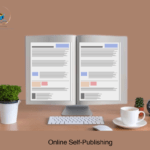When an organization or institution invites business proposals from potential service providers or suppliers for the procurement of a product, service, or resource, the document prepared is called Request for Proposal or RFP. The purpose of an RFP for library activation is to:
1. Inform suppliers that a library is interested in acquiring integrated software.
2. The software selection process is to give suppliers an idea of the competition that will be competitive.
3. Inform them about the features of the software.
4. Compare the best software or system among the available software.
5. Ensure that the software provides a clear understanding of the library’s software needs and analysis.

Main parts of RFP:
- Instructions for suppliers:
This part describes the structure of the RFP document. The meaning of the words used in the document is clarified (Example: Essential means must be fulfilled, and Preferred means better); The idea of the rating system is given (Example 1 to 5: most desirable to absolutely undesirable); Analysis of the various codes used (Example: A =Available, U =Unavailable, UD =Under development, FD =Future Development).
- idea about the library:
This section provides a general idea about the library. It also includes a description of the ideal objectives of the library and how the integrated software can help in fulfilling these objectives. If a survey has been conducted to determine the needs of library users, the results of that survey can also be included here.
- Reason for acquiring ILS:
This section should describe the purpose for which the library is interested in acquiring the integrated software. It should be mentioned whether the proposed ILST will replace any software that is currently being used or will replace a manual system.
- Current technology environment of the library:
This section should give an idea of the current overall technological environment of the library. Some of the things that can be mentioned here include; If the library collects any online databases, e-journals, or e-books, information on the library’s current hardware and software platforms, local area network capabilities, number of client workstations, number and qualifications of the library’s technical staff, and information on how the software will be hosted – on-site or cloud-based.
- Conditions:
If the supplier’s software is selected, it should mention which conditions will be applicable in signing the contract. It should also mention what kind of punishment/corrective action will be taken if the conditions of the contract are violated for any reason. It is better to have the conditions mentioned in it reviewed by a legal consultant before finalizing the RFP.
- Materials to be provided by the supplier:
The supplier must provide a list of materials to be submitted at the time of RFP submission. These include: a letter citing the source of the RFP, confidential but complete information about the company, information about the company’s organizational, administrative and legal arrangements, a statement of ongoing litigation or potential obstacles that may disrupt the company’s service provision, the company’s current position in the ILS market, a review of the company’s various ILS modules, names of notable customers, multiple references, etc.
- Supplier Response to RFP Terms:
It should give an idea of how the supplier will respond to the terms of the RFP. For example, it should be a requirement to provide a statement that they do not object to accepting the terms and conditions stated in the RFP.
- Answers to Questions:
This section should state that the supplier must provide detailed and satisfactory answers to all the questions asked in the RFP.
- Request for Bids:
A bid form should be attached to be filled in by the user. This form should mention the quantity and price of each of the goods/services being requested. Such as ILS software, software hosting services, old record conversion, barcode creation, etc. A one-month or two-month price guarantee may be requested for the listed items.
- Software Description:
The features that the ILS should have should be mentioned in detail. Which module should be capable of doing which tasks. In fact, this part is the main part of the RFP document. The desired features can be arranged like this: ‘General’, ‘Required’ and ‘Nice to have’. Supplier Proposal Evaluation Criteria: This section should clearly state that the library will use its own criteria to evaluate the user’s proposal. The evaluation criteria are specified in the general RFP. For example:
Some general guidelines for RFP preparation:
- Cost-effectiveness of the service provided by the supplier;
- Implementation plan;
- Training proposal;
- Supplier profile and list of clients;
- Warranty, support, updates, maintenance
- There should be a cover page, a table of contents, and an introduction. The purpose of the proposed ILS should be briefly described at the beginning.
- The desired features of the software should be divided into different sections. For example, one section should describe common features, another should describe required features, and another should describe features that would be nice to have.
- It should state what the ILS should be able to do – it is not necessary to state how these tasks will be accomplished.
- The RFP should explain all the symbols, abbreviations, technical terms, etc. used.
- If there is any survey, review, or research report on ILST for the organization, a copy of it can be requested.
- The supplier must provide the names, titles and responsibilities of key management and administrative personnel, along with the most recent audited financial statements of the organization.
- Users may be given four to six weeks to respond to the RFP.
An effective Request for Proposal (RFP) ensures that a library can clearly communicate its needs, expectations, and evaluation criteria to potential suppliers. By outlining the objectives, required features, current technology environment, and conditions, the RFP helps the library identify the most suitable Integrated Library System (ILS). Ultimately, a well-prepared RFP not only guides suppliers in presenting competitive and relevant proposals but also enables the library to make an informed, transparent, and cost-effective decision.



